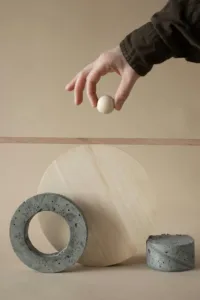What is zero gravity, A condition referred to as zero gravity or microgravity occurs when a body appears to be experiencing zero gravitational force. When there is little or no gravitational attraction, things and people appear to be weightless and float freely. Scientists, astronauts, and amateurs have all been captivated by this extraordinary environment, which offers deep insights into the nature of physics and opens up fascinating new avenues for space travel. The Earth and other celestial bodies are in a constant state of free fall, which gives the impression that one is weightless when in space. Space stations and satellites, among other objects in orbit, are in a condition of constant free fall because their forward velocity opposes the force of gravity.
The perception of the effects of gravity is the primary distinction between weightlessness and zero gravity. Things and people under zero gravity are in a constant state of free fall, which makes them seem weightless and float. They experience weightlessness despite the fact that gravity is still at work on them since they are falling freely in the same direction and at the same pace as their surroundings.
Exploring what is zero gravity ?
Impacts on Human Health due to zero gravity:
In zero gravity, the human body experiences a variety of physiological changes. Reduced stress on the muscles and bones due to the absence of gravity causes atrophy in the muscles and loss of bone density over time. During long-term space missions, astronauts frequently participate in strenuous exercise regimens to counteract these effects and preserve their physical health.Furthermore, the lack of gravity modifies body fluids, shifting fluids from the lower to the upper body, making the face appear puffy and impairing vision.
These modifications highlight how crucial it is to comprehend how human health is affected by zero gravity in order to plan long-term space flight and residence.
Opportunities for Scientific Research:
A unique laboratory environment for doing research in a variety of scientific fields is provided by zero gravity. Research in areas including fluid dynamics, materials science, and biology benefits from the study of phenomena in a microgravity setting. Without the effects of buoyancy and convection, researchers can monitor the behavior of fluids, flames, and biological processes, providing insights that are not conceivable under Earth’s gravity.Experiments carried out in zero gravity provide fresh insights and further scientific understanding of a variety of topics, from the formation of crystals to the behavior of fluids in space.
Beyond Space Exploration:
Zero gravity exploration is important for space exploration projects and is not limited to scientific study. Astronauts undergo intense training to become accustomed to the difficulties of functioning in zero gravity and to acquire the skills necessary for maneuvering, navigating, and carrying out activities in space.Furthermore, technologies intended for space flight and habitation are tested in zero gravity. Innovations discovered in microgravity circumstances have far-reaching ramifications for future missions to the Moon, Mars, and beyond, ranging from spaceship architecture to life support system.
Applications of zero gravity
Drug Development:
Scientists can more precisely examine how medications behave and interact with biological systems by carrying out tests in zero gravity. This may result in the creation of drugs that are less harmful and more effective.
Cell Cultures: Growing cell cultures in microgravity environments offers special growing circumstances that can help with understanding disease processes and cellular activity. The knowledge gathered from these studies advances the field of regenerative medicine and advances the methods of treating different diseases.
Crystal Growth:
Because there is no sedimentation or convection, crystals generated in zero gravity conditions are typically larger, purer, and more structurally homogeneous than those grown on Earth. Applications for these superior crystals can be found in materials engineering, electronics, and pharmaceuticals.
The production and behavior of alloys are better understood by scientists thanks to their microgravity experiments, which pave the way for the creation of stronger and lighter materials used in the building, automotive, and aerospace industries.
3D Printing:
In zero gravity, intricate structures may be produced more precisely and without the limitations of gravity thanks to additive manufacturing processes like 3D printing. This has consequences for the fabrication of specially designed components on Earth as well as on-demand manufacturing in space research missions.
Foam Formation: Scientists can better understand how foams and bubbles develop through microgravity studies, which can help in the production of food, cosmetics, insulation materials, and other consumer goods.


Hey people!!!!!
Good mood and good luck to everyone!!!!!